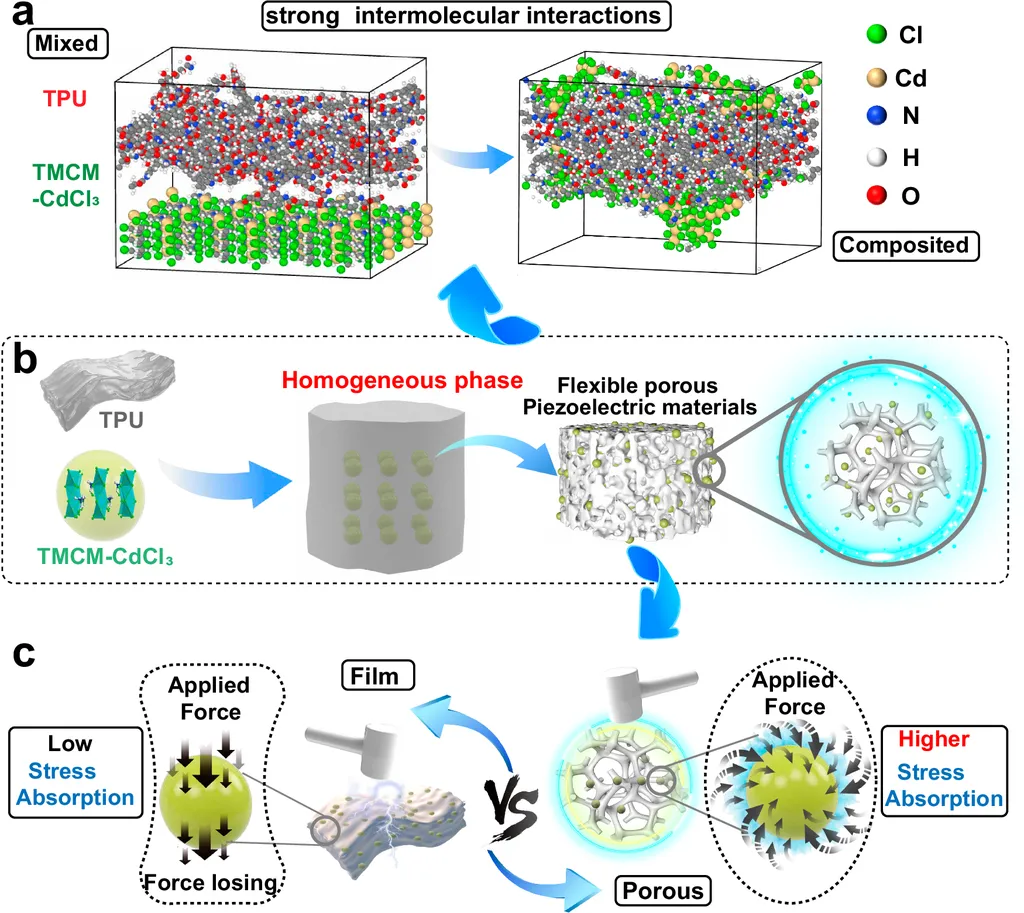In a significant stride towards enhancing the performance of piezoelectric devices, researchers have uncovered novel designs that could revolutionize applications in the energy sector. A recent study, led by Ramanand Dadhich from the Department of Mechanical Engineering at the Indian Institute of Technology Indore, delves into the untapped potential of porous relaxor ferroelectric ceramics, specifically 0.68Pb(Mg1/3Nb2/3)O3–0.32PbTiO3 (PMN-0.32PT). The findings, published in the open-access journal ‘Materials Open’ (translated to English as ‘Materials Open’), promise to shape the future of energy harvesting and acoustic technologies.
Piezoelectric materials, known for their ability to convert mechanical energy into electrical energy and vice versa, have long been a cornerstone in various industries. However, the performance of these materials has been constrained by the limitations of their porous structures. Dadhich and his team have addressed this challenge by exploring novel, ordered but non-uniform distributions of pores within PMN-0.32PT, a material renowned for its excellent electromechanical properties.
The study employs finite element simulations to analyze the impact of different pore shapes and distributions on the performance of piezoelectric devices. “We considered circular, elliptical, hexagonal, and square-shaped pores, each arranged in a non-uniform pattern,” explains Dadhich. “Our goal was to identify the optimal pore architecture that maximizes sensitivity and efficiency.”
The results are promising. The researchers found that the use of PMN-0.32PT significantly enhances the performance parameters governing sensitivity and efficiency. Moreover, the novel non-uniform distribution of pores further amplifies these benefits. “The enhancements are substantial,” says Dadhich. “We observed improvements in sensitivity up to [Formula: see text] and efficiency up to [Formula: see text].”
The implications for the energy sector are profound. Enhanced sensitivity and efficiency in piezoelectric devices can lead to more effective energy harvesting, improved signal-to-noise ratios, and better impedance matching in various applications. From underwater acoustic systems to biomedical devices and energy harvesting technologies, the potential for impact is vast.
This research not only identifies optimal pore architectures for both longitudinal and transverse configurations but also provides valuable guidelines for designing porous PMN-0.32PT with enhanced performance parameters. As the world continues to seek sustainable and efficient energy solutions, the insights from this study could pave the way for innovative advancements in the field.
In the words of Dadhich, “This work is a stepping stone towards designing next-generation piezoelectric devices with superior performance.” With the findings published in ‘Materials Open’, the scientific community now has a new roadmap to explore the untapped potential of porous piezoelectric materials, heralding a new era of technological innovation.

